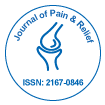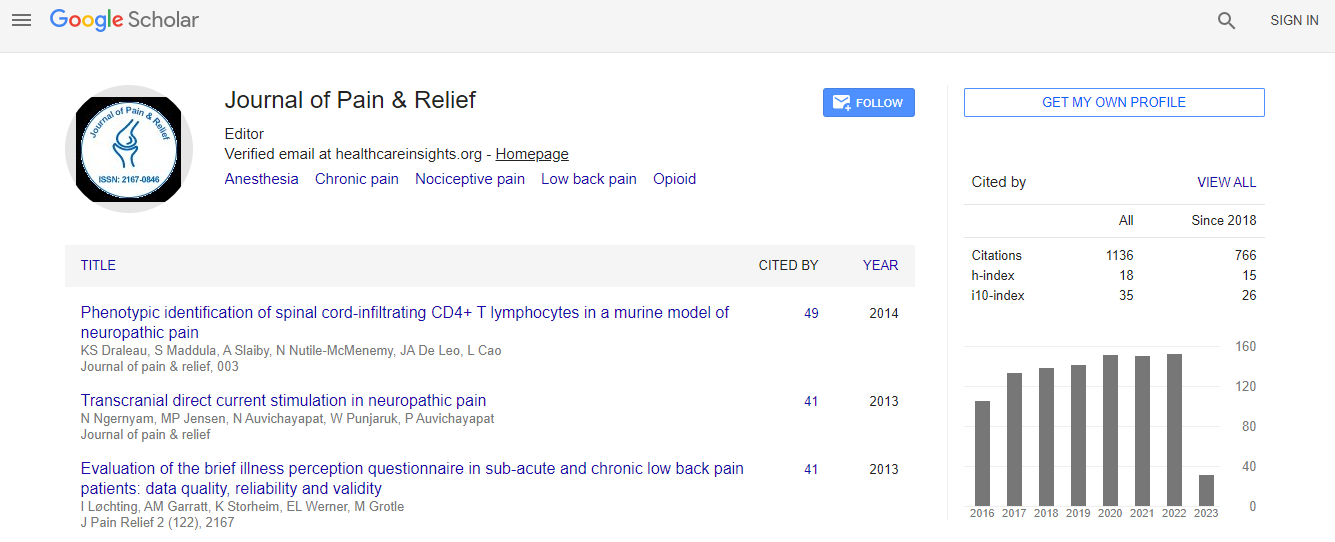Our Group organises 3000+ Global Events every year across USA, Europe & Asia with support from 1000 more scientific Societies and Publishes 700+ Open 91��ɫ Journals which contains over 50000 eminent personalities, reputed scientists as editorial board members.
Open 91��ɫ Journals gaining more Readers and Citations
700 Journals and 15,000,000 Readers Each Journal is getting 25,000+ Readers
Citations : 1583
Indexed In
- Index Copernicus
- Google Scholar
- Open J Gate
- Genamics JournalSeek
- Cosmos IF
- RefSeek
- Hamdard University
- EBSCO A-Z
- OCLC- WorldCat
- Publons
- Geneva Foundation for Medical Education and Research
- Euro Pub
- ICMJE
Useful Links
Recommended Journals
Related Subjects
Share This Page
Current practice of opioid prescription for chronic non-malignant pain and pain contract violations in a primary care clinic - Has New York s internet system for over prescribing act (ISTOP) had any impact?
2nd International Conference and Exhibition on Pain Medicine
Zeba Faroqui, Raya Gyourova, Anne Marie Laurri, Lin Mei and Rajvinder Sidhu
USA
Posters & Accepted Abstracts: J Pain Relief
DOI:
Abstract
Background: With the increase in prescribing practices, practitioners are facing a crisis of broad social concern in terms of abuse, overdose and misuse of opioids. As such, risk stratification models, pain contracts and - most recently - prescription drug monitoring programs have been implemented. The primary goal of these measures is to optimize effective treatment of pain whilst ensuring safe use. The NYS PMP Internet System for Over Prescribing Act (ISTOP) was of particular interest in this study. Since ISTOP became a mandate for most practitioners in August 2013, there is a paucity of data regarding its utility and effect on opioid prescribing practices as well as its impact on identifying abuse. Methodology: This study consisted of a retrospective analysis of the Electronic Medical Records (EMR) and ISTOP records of 121 subjects that had signed pain contracts between December 2013 and February 2015. A total of 424 patients signed pain contracts in the primary care outpatient clinic. Data collected included patients��? demographics, diagnosis, opioid prescribed, any adjunctive medications, referrals to pain management or other service, and if ISTOP was checked. Results: Of our population, most were female (65%) and African American (66%) with an average age of 55.5 years. Thirty eight patients in total violated the pain contract, 31.7% of patients taken into account. The most common violation by far was a positive urine drug sampling with 18 patients violating in this manner. ISTOP was used, and its use was documented, in 62.5% of patients with pain contracts but only three violations were detected in this manner, each for drug shopping. The most common diagnosis was backpain the most common drug prescribed was hydrocodone. There were no statistically significant demographic differences between those who violated the pain contract and non violators. We were unable to identify clinically significant predictors of violation in our patient population based on all demographic data. Discussion: In this study of patient��?s in an academic primary care setting, we found that 30% of patients violated this contract. The majority of these patients violated the contract based on a positive result for other illicit substance in the urinary toxicology. Though ISTOP was checked in the majority of these patients, its use detected only a minority of the violations. Interestingly, there were no significant differences between the population of violators and non-violators and no obvious predictors could be identified.Biography
Email: gyourova@gmail.com

